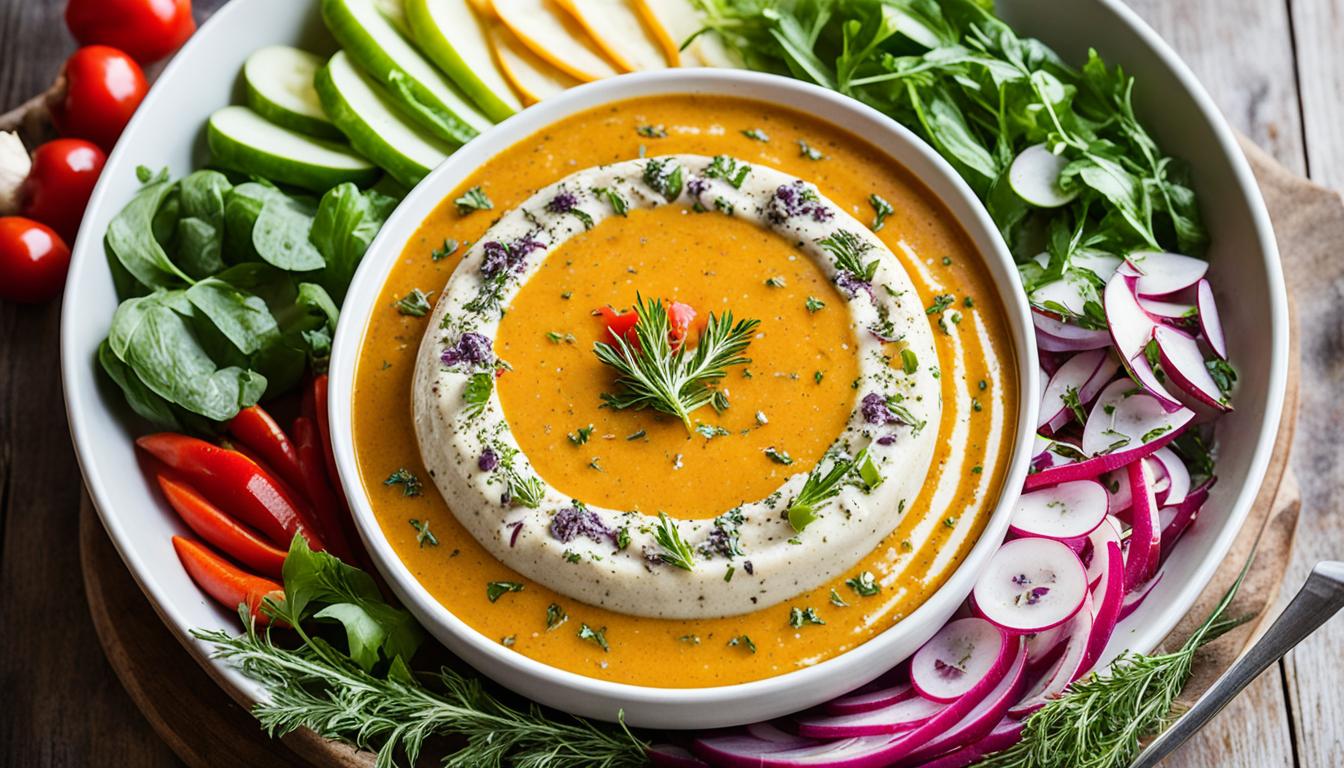Have you ever wondered how a landlocked region of Italy developed a signature dish centered around anchovies? Discover the fascinating origins and unique flavors of bagna càuda, the traditional northern Italian anchovy garlic dip that has been delighting Italian cuisine enthusiasts for centuries.
Bagna càuda, also known as garlic anchovy sauce, is a beloved appetizer that showcases the bold combination of garlic and anchovies in a rich and flavorful dip. In this article, we will explore the history of bagna càuda, its importance in Piedmontese cooking, the key ingredients and preparation methods, as well as tips for serving and enjoying this communal culinary delight.
Stay tuned to uncover the secrets behind this mouthwatering Italian delicacy and learn how to recreate an authentic bagna càuda experience in your own kitchen. Get ready to tantalize your taste buds and impress your guests with this timeless Italian classic.
The Origins of Bagna Cauda and the Importance of Anchovies in Piedmontese Cooking
Bagna càuda, a savory Italian anchovy garlic dip, has a fascinating origin story. It was created in the Piedmont region of Italy as a way to celebrate the harvest season and bring people together. The dish’s history is closely linked to the use of anchovies, which may seem unusual for an inland region like Piedmont. However, anchovies have played a significant role in Piedmontese cuisine for centuries.
In the past, salt was heavily taxed, posing a challenge for merchants bringing salt to Piedmont from the coast. To bypass the salt tax, clever merchants began packing their salt under layers of salted anchovies. The anchovies acted as a camouflage, allowing the salt to pass through undetected. This ingenious strategy introduced salt-packed anchovies to Piedmont, where they quickly became a staple in the local cuisine.
Every year, farmers from Piedmont’s picturesque Maira Valley would embark on a journey to the coast to purchase salt-packed anchovies. They would then return to Piedmont and sell these prized anchovies throughout the region. This tradition persisted until the era of World War II, when motor vehicles replaced the roaming anchovy merchants.
Despite the absence of anchovy carts today, the influence of salted anchovies remains deeply ingrained in Piedmontese cooking. Dishes like bagna càuda continue to showcase the unique flavors and culinary traditions that have been passed down through generations.
The Ingredients and Preparation of Bagna Cauda
Bagna càuda requires just three critical ingredients: garlic, anchovies, and olive oil. Some recipes may include additional ingredients like butter or milk, which can be a subject of debate among Italian cooks. When preparing bagna càuda, there are a few steps to enhance the flavor.
Garlic Poaching
To make the garlic easier to mash and to enhance its flavor, some cooks recommend poaching the garlic in milk or water before adding it to the oil. This process softens the garlic and brings out its natural sweetness, resulting in a smoother and more delicious dip.
Anchovy Quality
The quality of the anchovies you use in bagna càuda is crucial. Fresh and high-quality anchovies will have a more intense and flavorful taste, enhancing the overall experience of the dip. Opt for salt-packed anchovies for an authentic and traditional flavor.
Preparation Method
The preparation method for bagna càuda may vary slightly depending on the recipe or cook’s preference. However, the overall goal is to create a smooth and flavorful anchovy garlic dip. Begin by slowly heating the olive oil over low heat to infuse it with the flavors of the anchovies and garlic. As the mixture heats, the anchovies will dissolve, creating a thick and rich purée. Stir the sauce continuously to ensure that all the ingredients meld together and no flavors overpower each other. This slow cooking process helps to develop the depth of flavor and results in a mouthwatering dip.
Once the dip is ready, it can be served warm with an array of delicious dippers and vegetables.
Serving and Enjoying Bagna Cauda
Bagna càuda, the traditional warming dish, is best enjoyed in the company of loved ones, creating a true sense of communal eating. The key to serving this delectable Italian anchovy garlic dip is a special warming dish, designed to keep the dip warm throughout the meal. Typically, a small candle is lit underneath the dish to maintain the perfect temperature. However, if you don’t have a specific dish, worry not! Simply ensure that the dip is thoroughly heated before serving to enjoy it at its aromatic best.
When it comes to the accompaniments, raw vegetables take center stage in this delightful dining experience. Crisp and colorful radishes, cauliflower florets, cardoon stalks, bell peppers, and endive leaves all make fantastic choices for dipping. For an extra touch of flavor, consider adding roasted onions to the mix. These sweet and caramelized onions create a delightful contrast to the savory bagna càuda and add a burst of flavor to every bite.
To truly elevate the bagna càuda experience, it’s essential to offer a variety of dippers. Combining different colors, textures, and flavors ensures that every palate is satisfied. Whether it’s the vibrant crunch of a bell pepper, the mild bitterness of endive, or the earthy sweetness of a roasted onion, each dip reveals a unique flavor profile.
So gather around the table, ignite the warmth of togetherness, and dip those raw vegetables into the fragrant bagna càuda. Let the flavors mingle as you share stories, laughter, and love. This communal eating experience is the soul of bagna càuda, connecting us through the joy of delicious food and the magic of shared moments.
